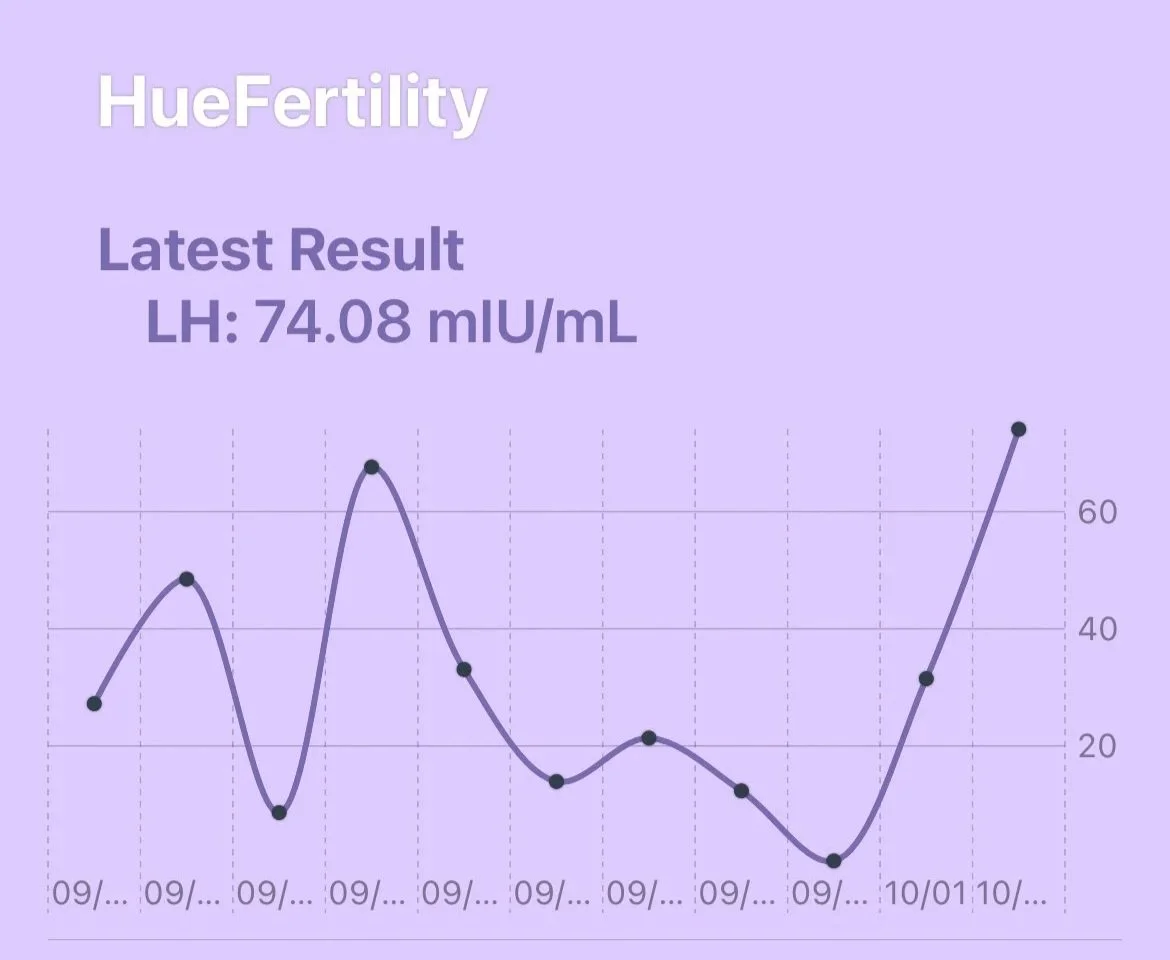What Hormone Patterns Should Look Like in a Healthy Cycle
A simple, science-backed guide to your follicular phase, ovulation window, luteal phase, progesterone timing, and what’s actually “normal.”
A healthy menstrual cycle follows a rhythm. Each month, your hormones rise and fall in a predictable sequence that grows a follicle, triggers ovulation, and prepares your body for implantation. When these patterns stay balanced, your cycle feels consistent. When they shift, you feel it — through mood changes, irregular timing, or difficulty conceiving. Understanding what “normal” hormone patterns look like makes the whole cycle easier to interpret.
The Follicular Phase: Preparing for Ovulation
The cycle starts with the follicular phase, when your body selects and matures a dominant follicle. Early in this phase, FSH gently rises to recruit follicles. As one becomes dominant, estrogen climbs steadily — usually a smooth, gradual increase rather than large, erratic swings. LH stays low during this time, and progesterone remains at baseline.
In a healthy follicular phase, estrogen’s upward trend is fairly predictable. If it fluctuates wildly, you may experience early-cycle mood swings, headaches, or changes in the length of your cycle. But generally, this phase is about quiet preparation: slow estrogen rise, steady follicle growth, and LH keeping calm in the background.
The Ovulation Window: The Hormone Crossroads
Ovulation happens when estrogen peaks high enough to signal your brain that the follicle is ready. That trigger sets off the LH surge — a sharp spike that causes the egg to release about 24 to 36 hours later. FSH also nudges upward briefly, but progesterone doesn’t begin rising until after ovulation.
A healthy ovulation window typically includes one clear estrogen peak and one strong LH surge. Multiple LH spikes, or surges that never quite reach a true peak, can make ovulation harder to pinpoint and may suggest stress, PCOS, or cycle dysregulation. But when timing aligns, it’s a well-choreographed event: estrogen peaks → LH surges → ovulation follows.
The Luteal Phase: Supporting Implantation
Once ovulation occurs, hormones shift gears. Progesterone rises significantly, confirming that ovulation actually happened. This hormone stabilizes the uterine lining and often creates a calmer, steadier mood. Estrogen has a smaller secondary rise mid-luteal, but LH and FSH drop back to baseline.
A stable luteal phase usually lasts 11 to 14 days and remains fairly consistent from month to month. Progesterone should peak 5 to 7 days after ovulation — a key marker of a healthy cycle. If the luteal phase is unusually short or progesterone doesn’t rise enough, it may indicate an ovulatory or hormonal imbalance worth tracking.
So What’s Truly “Normal”?
Every cycle has its quirks, but there are a few shared features of a healthy hormone pattern:
• Estrogen rises smoothly, followed by one strong peak
• LH surges clearly, leading to ovulation within 24–36 hours
• Progesterone increases right after ovulation and stays elevated
• The luteal phase stays relatively consistent each month
What’s more important than perfection is pattern stability. When estrogen is jumping around, when LH peaks happen multiple times, or when progesterone never clearly rises, it can be a sign your hormones are working harder than they need to.
These variations don’t necessarily mean something is “wrong,” but they do offer insight — especially when you’re trying to conceive, monitoring symptoms, or troubleshooting an unpredictable cycle.
Where HueFertility Fits In
Because most at-home ovulation tests give only a yes/no answer, a lot of these nuances never show up. Subtle hormone variations, early rises, weak peaks, or unclear LH surges can all be missed.
HueFertility changes that by giving you quantitative LH values through your phone, allowing you to actually see your hormone curve. This makes it easier to identify your real fertile window, confirm ovulation, understand your luteal timing, and recognize patterns that might warrant a closer look.
Understanding your hormone rhythm shouldn’t require guesswork — and with clear, quantitative data, it doesn’t have to.
